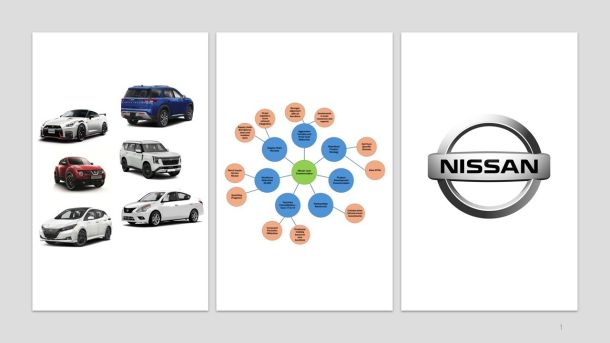Dynamic Capabilities of the Mongols
01 September, 2020
We are all work in progress when it comes to learning from History with a capital “H”.
Georg Hegel’s famous quote “We learn from history that we do not learn from history” pushes the problem further – we read through the lessons, but our behavior is not always aligned with what we learn. As a student growing up in Egypt, our history classes in middle and high schools included different lessons about the Mongols given their interaction with the Arab and Islamic world in Iraq, Syria and Egypt. There were always references to the leadership skills and tyrant nature of Genghis Khan as key drivers to their swift consecutive victories. For a teenager, the leadership capabilities of their leader were good enough to explain the chain of defeats of the Mongols’ enemies all the way from Karakorum to what is now Budapest. Genghis was exceptional – agreed, however, this naïve single-reason justification lacks coherence when you deep dive into the facts. Our dialogue here is not about analyzing the causes and catalysts of Mongols victory; our passion is to wave the flag to those who ignore looking for other clues that explain the scope and speed of Mongols victories in the 13th century. Our objective is to understand the whys.
 Let’s start with this question: how can Genghis Khan’s personal abilities explain the speed by which his armies moved from one city to another? The man was probably a genius tyrant but not someone who can bend constraints of the physical world. Genghis transformed the Mongols loyalty to him by splitting men from one tribe across different army units, and thus converting their loyalty to their units all the way up to him and neutralizing the effect of tribes’ loyalty. Through another system in organizing the armies in multiples of tens, less effort was needed to re-integrate the army and less investment went into supervision. Perhaps this was a novel idea eight hundred years ago, and we might not be 100% certain that no other leader deployed a similar strategy, however, again, it does not answer the question about the army’s speed.
Let’s start with this question: how can Genghis Khan’s personal abilities explain the speed by which his armies moved from one city to another? The man was probably a genius tyrant but not someone who can bend constraints of the physical world. Genghis transformed the Mongols loyalty to him by splitting men from one tribe across different army units, and thus converting their loyalty to their units all the way up to him and neutralizing the effect of tribes’ loyalty. Through another system in organizing the armies in multiples of tens, less effort was needed to re-integrate the army and less investment went into supervision. Perhaps this was a novel idea eight hundred years ago, and we might not be 100% certain that no other leader deployed a similar strategy, however, again, it does not answer the question about the army’s speed.
 In relative terms, and putting the technologies of the 20th century aside, the Mongols are probably the fastest army in History. Mongol warriors could ride around 80 miles a day; this was unprecedented – we are talking logistics of 1230’s AD. How? Each warrior had somewhere from four to five horses accompanying him; continuously changing to a fresh horse was the routine to enable extending the long ride to 80 miles a day. We can ask ourselves, using a pseudo 5 why technique, but then how did the Mongol ponies endure the long trips and maintain fitness? Unlike Andalusian or English ones, Genghis stocky ponies were small, fast, and could live off small doses of grass. They had really strong legs and hooves. They could easily weigh 120 kilograms less than horses of the Middle East or Europe. But then, again, how did the riders maintain their fitness to ride and fight at the same time? The answer can be explained through the Resource Based View (RBV) in business literature; a managerial framework to define the strategic resources and capabilities available for exploitation. Utilize this in the right way and you create competitive advantage. Mongols start their training at an early age; training included horse riding, hunting and archery. Their training skills and mindset is a dynamic capability not only a skill; between continuous rotations, complex formations and diversionary tactics, the army had the resilience to react fast – most probably, always.
Genghis Khan understood his role to an exceptional level of clarity. He focused on creating the enabling culture and growing his army’s capabilities; capabilities that create other capabilities and secure advantages versus competition.
This is sustained resilience. This is how you ride 80 miles a day in 13th century.
Keep asking the right questions.
Thank you.
For more information on dynamic capabilities and RBV, please look up David Teece and Jay Barney. For more insights on the progress of history, please look up Georg Hegel.
In relative terms, and putting the technologies of the 20th century aside, the Mongols are probably the fastest army in History. Mongol warriors could ride around 80 miles a day; this was unprecedented – we are talking logistics of 1230’s AD. How? Each warrior had somewhere from four to five horses accompanying him; continuously changing to a fresh horse was the routine to enable extending the long ride to 80 miles a day. We can ask ourselves, using a pseudo 5 why technique, but then how did the Mongol ponies endure the long trips and maintain fitness? Unlike Andalusian or English ones, Genghis stocky ponies were small, fast, and could live off small doses of grass. They had really strong legs and hooves. They could easily weigh 120 kilograms less than horses of the Middle East or Europe. But then, again, how did the riders maintain their fitness to ride and fight at the same time? The answer can be explained through the Resource Based View (RBV) in business literature; a managerial framework to define the strategic resources and capabilities available for exploitation. Utilize this in the right way and you create competitive advantage. Mongols start their training at an early age; training included horse riding, hunting and archery. Their training skills and mindset is a dynamic capability not only a skill; between continuous rotations, complex formations and diversionary tactics, the army had the resilience to react fast – most probably, always.
Genghis Khan understood his role to an exceptional level of clarity. He focused on creating the enabling culture and growing his army’s capabilities; capabilities that create other capabilities and secure advantages versus competition.
This is sustained resilience. This is how you ride 80 miles a day in 13th century.
Keep asking the right questions.
Thank you.
For more information on dynamic capabilities and RBV, please look up David Teece and Jay Barney. For more insights on the progress of history, please look up Georg Hegel.




